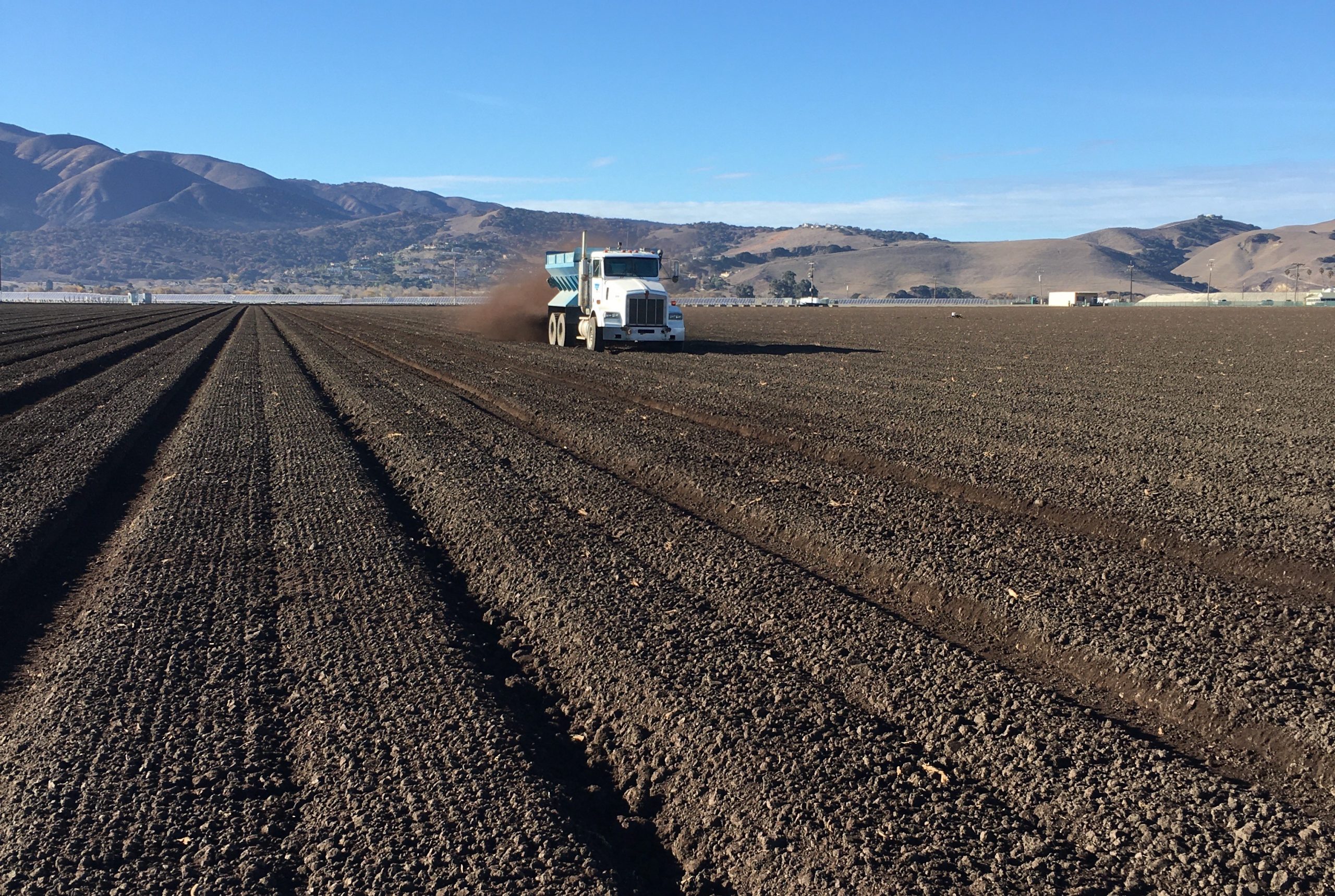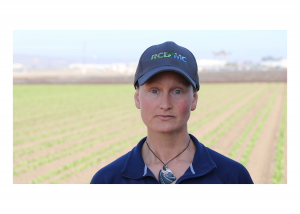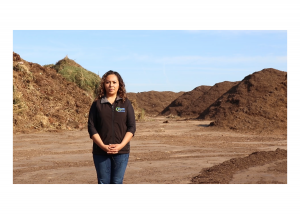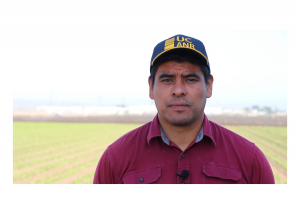
Compost for Climate Resilient Salinas Valley
Climate change is not a future threat to the Central Coast region. The region is experiencing it now and the effects are predicted to continue to intensify.
“Symptoms of climate change including increased temperatures, wildfire intensity, storm anomalies and sea water intrusion into ground water aquifers are dramatically impacting the production of specialty crops that are important and grown in the region such as cool season vegetables,” Laura Murphy, Resource Conservation District Monterey County.
“The soils of the Salinas Valley and surrounding regions are one of the most important resources we have. Protecting them against a changing climate is critical to the future of the region. Recycling organic materials back into agriculture as compost is a solution,” explained Murphy.
Adapting to these changes in the climate requires a change in farming practices. Improving the health of the soil is one way to adapt and mitigate some of the most important harmful impacts to protect both the economic and ecological viability of the region. “Climate-smart soil management acknowledges the important role of soil in providing climate mitigation options and aims to foster co-benefits such as greenhouse gas reduction, soil carbon sequestration and farm resiliency to the extreme weather and drought conditions,” said Murphy.
“Implementing conservation practices in intensively managed vegetable production systems has always been difficult, but the application of compost can provide producers with very much needed flexibility to increase conservation goals and simultaneously develop farm resiliency to the symptoms of climate change,” noted Murphy. “Increasing soil organic matter has numerous benefits, including increased water holding capacity, improved nutrient cycling and plant nutrient availability, diversifying and enhancing soil biological life and increasing carbon sequestration. These benefits of increased soil organic matter can lead to crop benefits including reduced irrigation demands, increased nutrient use efficiency and stabilized yields,” she said.
Beginning in 2022, California’s new state mandate, SB 1383, essentially eliminates organic materials from being landfilled to reduce greenhouse gas emissions and divert edible food for human consumption. “Diverting organic waste from landfills through composting not only reduces greenhouse gas emissions from the waste sector but also allows for nutrients to be cycled back into managed landscapes,” said Darlene Ruiz, with Salinas Valley Recycles.
“Compost is a stable nutrient-rich amendment that consists of a variety of organic materials that have gone through a heating and curing treatment process to be stabilized for use in agricultural production. Understanding the importance of protecting the public, each batch of compost produced undergoes a process to reduce pathogens, or PFRP, which requires piles to reach 131 degrees Fahrenheit for 72 hours, effectively eliminating harmful pathogens,” noted Ruiz. “Extra testing for human pathogens such as E. Coli and salmonella, ensures that the product is safe to use on crops that will be consumed fresh, such as lettuce. Documentation of these tests are available upon request,” she explained.
Compost is made by carefully mixing feed stocks of different carbon and nitrogen-rich materials. At the Johnson Canyon organics facility, state-of-the-art technology called ASP, or Aerated Static Pile, composting is used to create a consistent thermal treatment of the material. “Daily record-keeping of times and temperatures are required by local permits and state regulations and can be made available upon request,” said Andrew Tuckman, with Vision Recycling.
“After going through the heating process the material is allowed to cool and cure, enlivening it with beneficial microbial life and stabilizing it for sale. Transporting and spreading can be a sustainable component of the cost of purchasing material. It’s recommended that you discuss this with the composter and plan ahead,” he said.
With growers under increasing pressure to limit the application of nitrogen fertilizer due to potential harmful impacts to public and ecological health, compost application can help build soil nutrient reserves which results in a maintenance of significant proportions of crop demand while complying with water quality regulations. “Incorporating organic amendments into nutrient management plans can help reduce the need for synthetic fertilizers and improve soil conditions for future crops. Understanding soil nitrate levels is one of the most important actions growers can take to limit nitrogen loss,” said Carlos Rodriguez-Lopez, UC Cooperative Extension, Monterey County.
Using the soil nitrate quick test or other soil nitrogen testing methods before compost applications can help when choosing products. The carbon to nitrogen ratio of compost can be an important indicator of whether applications will retain nitrogen or release it for further uptake.
“At times, nutrient managers may want to immobilize nutrients and at other times, make them available,” said Rodriguez-Lopez. “Application timing can vary depending on management objectives. Either late in the fall, before winter rains, early spring or in between crops after the summer fallow. Application rates can also vary. Rates that are aimed at maintenance of soil organic matter may, after multiple applications, be as low as 4 to 5 tons per acre,” he said.
“If land is critically low in soil organic matter, higher rates of 10 plus tons per acre may be appropriate. No one recommendation fits all. Each field and crop location is different requiring unique approaches,” explained Rodriguez-Lopez.





